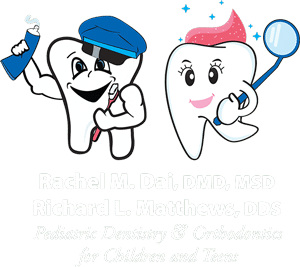The Buzz on Legacy Orthodontics
The Buzz on Legacy Orthodontics
Blog Article
How Legacy Orthodontics can Save You Time, Stress, and Money.
Table of ContentsGetting My Legacy Orthodontics To WorkIndicators on Legacy Orthodontics You Should KnowThe Basic Principles Of Legacy Orthodontics Legacy Orthodontics Things To Know Before You Get ThisLegacy Orthodontics for Dummies
In addition, we provide flexible treatment timetables, flexible repayment options and a fun, delightful experience.An orthodontist is a dentist trained to detect, prevent, and treat teeth and jaw abnormalities. They deal with existing conditions and are trained to determine problems that might establish in the future. Orthodontists collaborate with individuals of any ages, from children to adults. Individuals frequently associate an ideal smile with health.
Malocclusion, or misaligned teeth, can result in oral concerns, including dental caries, gum illness, and tough or unpleasant chewing. Not everyone is born with straight teeth. If you have a bad bite or large spaces between your teeth, you might wish to consult a dental professional specializing in orthodontic care.
The Facts About Legacy Orthodontics Uncovered
( Image Credit Report: DigitalVision/Getty Images) Orthodontists use dealt with and detachable dental gadgets, like braces, retainers, and bands, to transform the placement of teeth in your mouth. Orthodontic therapy is for dental problems, including: Uneven teethBite problems, like an overbite or an underbiteCrowded teeth or teeth that are too far apartJaw misalignmentThe objective of orthodontic treatment is to boost your bite.
While you might assume of orthodontists as primarily for youngsters or teens who require braces, they can fix dental issues at any kind of age. Orthodontists participate in college, oral institution, and orthodontic college.
, but not all dentists are orthodontists. They concentrate on 2 areas: Just how to correctly and safely move teeth Exactly how to effectively direct development in the teeth, jaw, and faceOnce an orthodontist has completed training, they have the option to come to be board certified.
The smart Trick of Legacy Orthodontics That Nobody is Talking About
Misalignment, or malocclusion, is one of the most typical factor individuals see an orthodontist. It is genetic and is the outcome of size differences between the top and reduced jaw or in between the jaw and teeth. Malocclusion brings about tooth overcrowding, an askew jaw, or irregular bite patterns. Malocclusion is normally treated with: Your orthodontist affixes steel, ceramic, or plastic square bonds to your teeth.
If you have just small malocclusion, you may be able to use clear braces, called aligners, as opposed to conventional braces (https://writeablog.net/legacyortho/your-smile-deserves-the-best-choose-a-leesburg-orthodontist). Some individuals require a headgear to aid move teeth into line with stress from outside the mouth. After dental braces or aligners, you'll need to use a retainer. A retainer is a personalized tool that maintains your teeth in location.
They're usually used on children. They can develop extra space in the mouth without having to draw teeth. If you have a serious underbite or overbite, you might require orthognathic surgery (also called orthodontic surgery) to lengthen or shorten your jaw. Orthodontists utilize wires, surgical screws, or plates to sustain your jaw bone.
You might need to see an orthodontist if you could check here you have: Crowding or not enough area for every one of your teethOverbite, when your upper teeth come over your bottom teethUnderbite, when your base teeth are also much forwardSpacing or problems with gapsCrossbite, which is when your top teeth fit behind your bottom teeth when your mouth is closedOpen bite or a vertical space between your front bottom and upper teethMisplaced midline, when the facility of your base and top teeth do not align Remedying a dental malocclusion can: Make attacking, chewing, and speaking easierImprove the symmetry of our face and your general appearanceEase pain from temporomandibular joint conditionsSeparate your teeth and make them much easier to clean up, assisting avoid dental caries or dental caries It's usually a dental expert who initially notifications misaligned teeth during a routine test.
3 Simple Techniques For Legacy Orthodontics

Throughout your first orthodontic examination, you'll likely have: A dental examPhotos taken of your face and smileDental X-raysPanoramic (360 degree) X-rays of your face and headImpressions to develop molds of your teethThese tests will help your orthodontist recognize exactly how to wage your treatment. clear braces. An orthodontist is a dental practitioner who's had training to treat your teeth and jaw
Orthodontists might perform surgical procedure, exams,X-rays,and even more to aid you attain a much more comfortable, much healthier smile. An orthodontist is focused on your bite, so something like a damaged tooth would certainly be taken care of by a dental expert. Orthodontists are dental experts but not all dental professionals are orthodontists. Orthodontists are concentrated on your bite, or the way your teeth fit with each other, and the straightness of your teeth.
Ever asked yourself exactly how stars constantly appear to have completely straightened teeth? Orthodontists are dental specialists who focus on fixing irregularities in the teeth and jaws.
The Only Guide for Legacy Orthodontics

, orthodontists have a diverse toolkit at their disposal. These tried-and-true dental braces use a system of braces bonded to the teeth and connected by wires.
These detachable trays are custom-made to progressively move the teeth's setting. In situations of slim jaws, palatal expanders can be used to develop space for appropriate tooth positioning.
Report this page